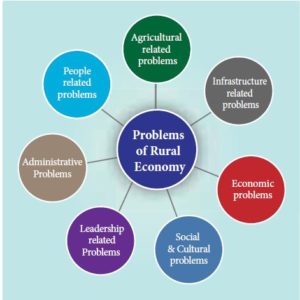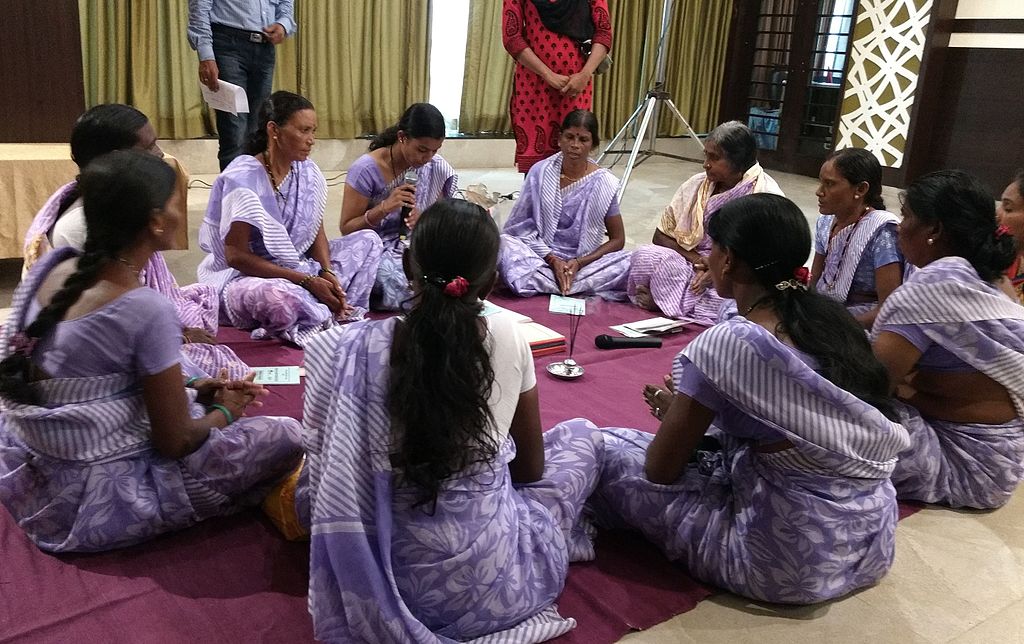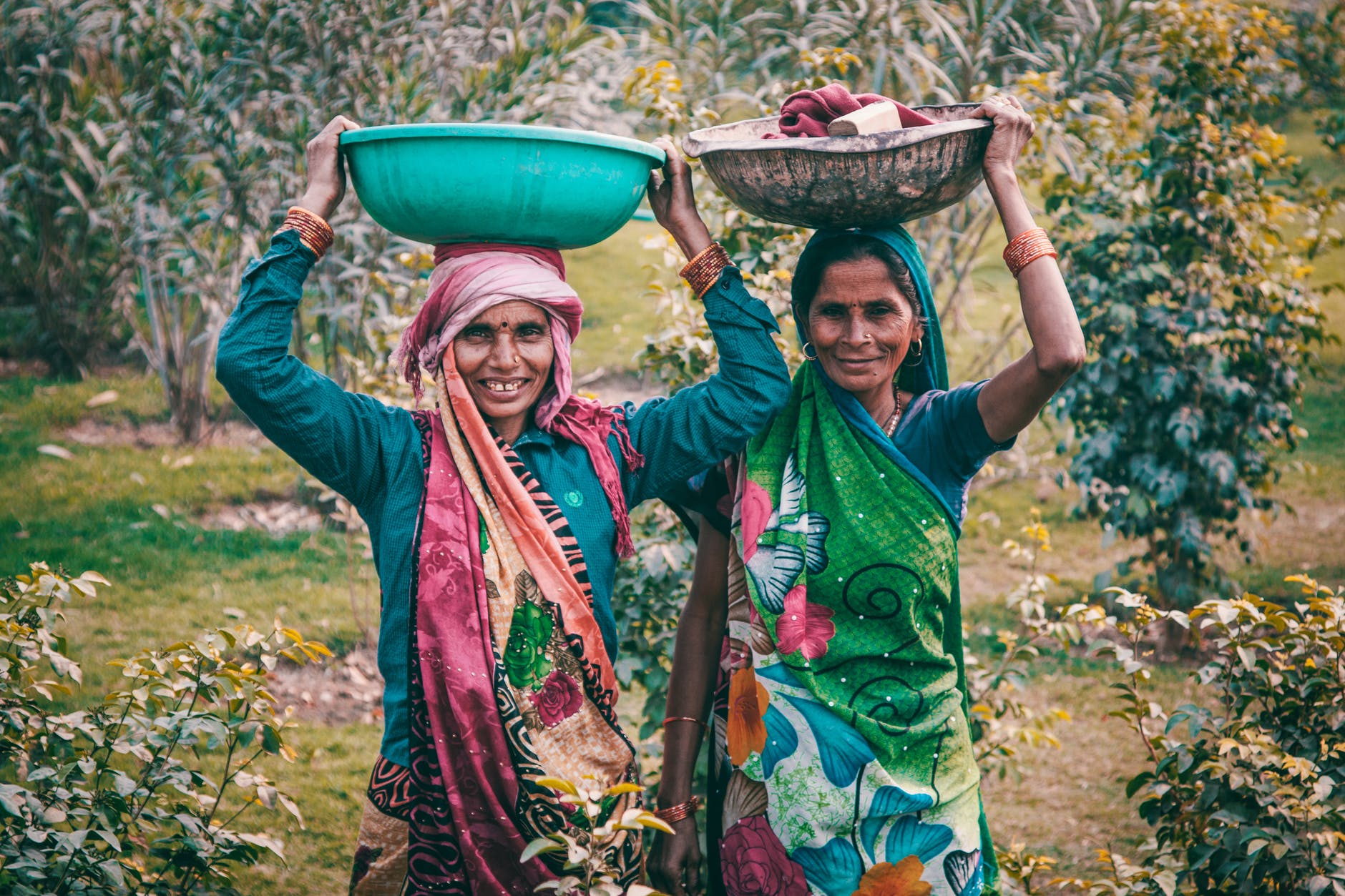The article deals with the features of rural development in India and understands the need to develop rural areas. The problems faced by the villages and initiatives taken by the governments to improve the conditions are also discussed.
Rural welfare-oriented programmes
- Mahatma Gandhi National Rural Employment Guarantee Act (MGNREGA)
- PRADHAN MANTRI AWAS YOJANA- GRAMIN – PMAY (G)
- Pradhan Mantri Gram Sadak Yojana (PMGSY)
- Deen Dayal Upadhyaya Grameen Kaushalya Yojana (DDU-GKY)
- Mission Antyodaya
- National Social Assistance Programme (NSAP)
- Saansad Adarsh Gram Yojana (SAGY)
- Aajeevika – National Rural Livelihoods Mission (NRLM)
- SHYAMA PRASAD MUKHERJI RURBAN MISSION (SPMRM)
1. Mahatma Gandhi National Rural Employment Guarantee Act (MGNREGA)

The vision of Mahatma Gandhi NREGA is to enhance the livelihood security of rural households across the country by providing at least 100 days of guaranteed wage employment in a financial year to every rural household whose adult members volunteer to do unskilled manual work. Mahatma Gandhi NREGA recognizes the importance of strengthening the livelihood resource base of the poor by reaching the most vulnerable sections of rural areas, including Scheduled Castes, Scheduled Tribes, women-headed households, and other marginalized groups.
The scheme encourages a sense of community and collective responsibility by strengthening Panchayat Raj institutions. Mahatma Gandhi NREGA promotes a bottom-up approach to planning and execution, empowering local communities to take charge of their development. Through the creation of productive assets of prescribed quality and durability, the scheme addresses immediate economic needs while laying the foundation for long-term prosperity.
Mahatma Gandhi NREGA prioritizes sustainable development and environmental stewardship, striving to create a greener, more sustainable future for generations to come by prioritizing works that contribute to ecological conservation and rural infrastructure development. Central to the scheme’s vision is a commitment to transparency and accountability, ensuring that funds are utilized efficiently and beneficiaries’ rights are upheld through mechanisms such as social audits, grievance redressal, and proactive public disclosure.

Scheme Highlights MGNREGA
Employment Guarantee
MGNREGA provides a legal guarantee for 100 days of employment per year to every rural household in India. This ensures that eligible households have access to a minimum level of employment, helping alleviate poverty and providing a safety net during periods of economic distress.
Focus on Rural Development
The primary objective of MGNREGA is to enhance the livelihood security of rural households by promoting sustainable rural development. The program emphasizes the creation of productive assets such as water conservation structures, rural roads, and other infrastructure projects that contribute to the overall development of rural areas.
Inclusive and Demand-Driven
MGNREGA is designed to be demand-driven, meaning that employment opportunities are created in response to the expressed demand from the rural community. The beneficiaries have the right to demand work, and the government is obligated to provide employment within 15 days of such a demand.
Women’s Participation
The act promotes the active participation of women in the workforce. One-third of the beneficiaries are women, and efforts are made to ensure that at least 50% of the workers are women. This not only contributes to women’s empowerment but also addresses gender disparities in rural employment.
Transparency and Accountability
MGNREGA emphasizes transparency in the implementation of projects and financial transactions. Social audits are conducted to ensure accountability and enable local communities to actively participate in monitoring the implementation of projects. Information about the scheme, including work details, wages, and funds allocated, is made available to the public through various channels.
Electronic Fund Management
The use of technology is encouraged for efficient implementation and monitoring. An Electronic Fund Management System (e-FMS) is employed to transfer wages directly to the bank accounts of the workers, reducing leakages and ensuring timely payments. This helps in minimizing corruption and improving the efficiency of the program.
2. PRADHAN MANTRI AWAS YOJANA- GRAMIN – PMAY (G)
Social Sector Problems
1. Village Economics
It deals with the application of principles of economics and the development of the lives of people in rural areas. Village economy refers to the economy of the communities or people who live in villages.
The problems faced by the villages are low employment opportunities, poverty, backwardness in agriculture, poor infrastructure, illiteracy, poor labour productivity, surplus labour forces, population, high dependency on natural resources, etc.
As per 2011 population census 6,40,867 villages in India and out 121 crore people 68.84% of people live in villages.
1.2 Features of Rural Economy
a. Village as an Institution
It is a primary institution and it satisfies all the basic needs of rural people and their communities these people have a feeling of belonging and a great sense of unity towards each other.
b. Dependence on Agriculture
Most people are dependent on natural resources, agriculture activities, and allied services of agriculture.
c. Life of Village People
The lifestyles of these people are generally simple, they rely on faith, superstition, and traditional cultural practices. Basic public services such as education, transport, banking, hospitals, etc are very limited and mostly unavailable. Most of the people are economically poor.
In terms of production, the social organization of the rural sector is extremely weak, and in recent years alcohol drinking and caste killings have gone up. The people of the so-called High, Mid Caste live in the village mainland as a single group and SC or so-called lower caste people are forced to live outside the village mainland.
d. Population Density
Population density is generally lower in villages and houses are scattered in villages. Village people generally live as groups and colonies.
e. Employment
Unemployment is common in villages. There exist seasonal and underemployment in villages. Unemployment is a situation where people with abilities and willingness do not find any work. Underemployment is the excess of people employed over and above the requirement. Disguise Unemployment is where people work and there is no increase in production.
Underemployment and Disguised Unemployment, both of these exist in village areas.
f. Poverty
It is a condition where basic needs such as food, shelter, and clothing are not met. According to the 2011-2012 economic survey, about 22 crore villages, people are below the poverty line.
g. Indebtedness
Village people are highly indebted owing to poverty and underemployment. This is due to a lack of agriculture and non-agriculture job opportunities, seasonal employment, low-wage employment, poor production, poor marketing networks, etc.
Since there were no formal loan facilities available to the villagers, they had no way but to lend money to the money lenders who squeezed the villagers.
As a result of these parasites (money lenders), villagers commit suicide.
” An India farmer is born in debt, lives in debt and dies in debt ” stated by a British writer Sir Malcolm Darling (1925)
h. Village Income
The village economy is not vibrant enough to provide work consistently or self-employment opportunities. A large number of labourers and skilled people are underemployed and the scope of increase of income is limited.
1.3 Rural Development
Rural development is an overall improvement in the social and economic, well-being of villagers.
As per World bank, “Rural Development is a strategy designed to improve the economic and social life of
a specific group of people – rural poor”http://documents.worldbank.org/curated/en/522641468766236215/Rural-development
In brief, rural development is a process of improving the village areas, their people, and their living.
1.4 Need for Rural Development in India
It is essential for the overall growth and development of the Indian economy due to the following reasons.
- Most of the population lives in the village and their contribution is essential for nation-building.
- By keeping villages backwards, India cannot be developed.
- The backwardness of villages has a significant impact on the National economy, as it provides essential commodities such as milk, food and raw materials.
- Improving the village areas in areas of education, health and sanitation, can avoid Urban problems such as begging, rack picking and slumming due to migration from villages.
- Food production and rural employment can be increased by developing agriculture and allied activities in rural.
- Rural development reduces the evils of brain drain and urban migration.
- Underutilized resources can be utilized by improving the village’s economy.
- PURA by former President Abdul Kalam, In terms of infrastructure facilities, the gap between Rural and Urban must be reduced by rural development.
- The Human Development Index (HDI), Women Empowerment Index (WEI), Gender Disparity Index (GDI), Physical Quality of Life Index (PQLI) and Gross National Happiness Index (GNHI), are an economic indicator that needs to be addressed to improve the national status globally.
10.5 Problems of Rural Development in India

- People Related Issues– Sentiment and Beliefs, illiteracy, lack of technical knowledge etc are some of the problems.
- Agriculture– Agricultural problems include knowledge, unavailability of inputs, poor marketing of agricultural products, small land holdings, fragmentation of land holding, absence of infrastructure to stay and work in villages, low adoption of modern technologies, lack of investment in both public and foreign investments, and fixing of the price of own agricultural goods.
- Infrastructure– lack of electricity, water, health, storage, banking and insurance, educational institutions etc in rural areas.
- Economics- Inability to adapt to technology and inputs, low-income, underprivileged rural industries, indebtedness and inequality in land holding and assets. Also, feed landlords owing large areas.
- Leadership- Rural people are in the hands of leaders who are incompetent, self-interested and politically biased.
- Administration- Low wages, improper utilization of budget, lack of monitoring body for rural development programmes.
1.6 What is Rural Poverty?
On the basis of food consumption, a person taking less than 2400 calories per day in a rural area is considered rural poverty.
As the Planning Commission estimates, 54.1 % of people live below the poverty which accounts for 33.8 % during 2009-2010. Poverty is high among Scheduled Castes (SC) and Scheduled Tribes (ST) in rural areas.
In 2005, SC and ST people accounted for 80 % of the poor in rural although their share in the total rural population is much smaller.
In 2015, 80 crores or more lived in villages, and 22 crore people are below the poverty line which is one quarter.
India is home to 22% of the world’s poor.
1.6.1 Causes of Rural Poverty
- Landless agricultural labour, they work on other’s land to support their families.
- Lack of Non-farm Employment- Many workers are hired for lower wages due to the lack of non-farm employment.
- Lack of Public Sector Investment- This is the root cause of poverty in rural, as the Public sector lacks investment in human resource development.
- Inflation- Increases in price affect the power of purchasing in rural.
- Low Productivity- Many people are employed for less demanding work and hence paid less, resulting in less productivity.
- Unequal Benefits of Growth- Urban rich enjoy economic development, but due to poor economic structure contributions of the poor are not accounted for property and their hard work does not improve their financial status.
Ministry of Rural Development in India
These are the Rural Welfare Oriented Programmes that are given by the Ministry of Rural Development. It is one of the ministries of the government of India for planning and providing faster growth in the village or rural areas.
- Shyama Prasad Mukherji Rurban Mission
It is a centrally sponsored scheme, which was launched in 2016 that is developed to accelerate rural growth. The funding is shared by the state government and central government in the ratio of 40:60. That is 60% by the centre and 40% by the state.
For the Himalayan state and NE state, it is 90% by the centre and 10% by the state.
Under this mission, the Union government at the centre will coordinate with the district administration to develop urban cities with proper civic amenities for villages and gram panchayats.
Social Welfare Programmes

Ministry of Agriculture and Farmer Welfare
- Pradhan Mantri Fasal Bima Yojana
- Soil Health Card (SHC) Scheme
- Pradhan Mantri Kisan Samman Nidhi (PM-KISAN)
- Pradhan Mantri Kisan Maan Dhan Yojana (PM-KMY)
- Participatory Guarantee Scheme (PGS)
- Schemes to support organic farming in-country
Conclusion
Several ministries of the Union Government of India design different development schemes to improve the benefits or welfare of the people. Some such schemes are the National Rural Livelihood Mission, MGNREGA, etc.

